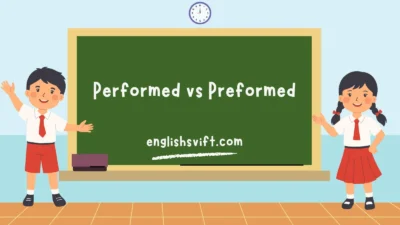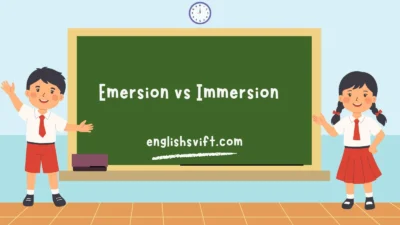Ever stumbled over a test question that began with “Which of the following…”?It’s a tiny phrase—but it carries serious weight.
From school exams to online quizzes, it pops up everywhere.But are you really using it—and answering it—correctly?This phrase doesn’t just test knowledge; it sharpens decision-making.
Whether you’re a student, a teacher, or just curious, mastering it matters.Let’s break it down, fix common mistakes, and explore real examples.
By the end, you’ll never look at “Which of the following” the same way again.
What does “Which of the Following” mean: phrase definition and function
“Which of the following” invites a reader to select from a list of options. It’s a fixed phrase made up of three parts—which, of, and following—that together introduce a series of potential answers. In multiple‑choice questions, this phrase functions to narrow the field so that the reader chooses the correct item. It’s commonly used, and its function is clear: guide choice.
For example: “Which of the following colors has the longest wavelength: red, green, or blue?”
How the structure includes “which”, “of”, and “following” and introduces options
The structure always includes those three words:
| Part | Role |
| which | interrogative pronoun, ask |
| of | preposition, linking to options |
| the following | phrase pointing to next items |
Together, they introduce the next list of items. They signal that what comes after is the pool of possible answers. That function is essential in limited‑range test formats.
Why “Which of the Following” is commonly used in multiple choice questions
Test writers rely on it because:
- It clearly signals one or more correct answers.
- It limits options to a defined list.
- It improves consistency in vocabulary and style.
Real‑life exam: “Which of the following are mammals?” reader sees items and selects.
Example items and series: colors, longest wavelength (red, green, blue)
Consider this set:
- red
- green
- blue
If the question is “Which of the following colors has the longest wavelength?”, the correct answer is red. That’s a simple way to demonstrate how example items work in series.
How to select the correct option: reader guidance on choose/select
To choose right:
- Read the question fully.
- Focus only on the list that follows.
- Understand key concept (e.g. longest wavelength).
- Eliminate distractors.
- Select your best match.
In verbal context, you might ask: “Which of the following cities have you visited?”
The role of the interrogative pronoun “which” in asking choice questions
“Which” is an interrogative pronoun asking for a specific choice from a group. It implies known options: a list. That clarity helps the reader know what to do.
Prepositional phrase “of the following”: grammar breakdown
“Of the following” is a prepositional phrase, meaning “from what comes next.”
Grammar‑wise:
- “of” links to the list.
- “the following” refers ahead.
- Together, they define context and scope of possible answers.
Limited range and list context: how the phrase defines the next items
This phrase limits the range: don’t look elsewhere. Only items in that list are valid. That’s why it’s popular in multiple‑choice questions and quizzes.
Common spelling mistakes: “beleive” vs. “believe”, “vaccum” vs. “vacuum”
Spelling errors often sneak in:
| Mistake | Correction |
| beleive | believe |
| vaccum | vacuum |
| vaccuming | vacuuming |
| vaccuum | vacuum |
Use a grammar checker or QuillBot to avoid these. And for “email hyphenation,” avoid splitting incorrectly.
Grammar checker advice: avoid errors like “vaccuming”, “email hyphenation”
Don’t write vaccuming—it’s wrong. Use “vacuuming.” Avoid splitting “e‑mail” unnecessarily. Use tools to flag “lable” vs. “label,” “sence” vs. “sense,” etc.
Synonyms and adverb/adjective usage: separate vs. separate, synonyms of dying
Understanding parts of speech:
- separate (verb/adjective): to separate, a separate issue
- Synonyms of dying: dying, dyeing, dieing (only second is valid).
Also care less vs. couldn’t care less—idiomatic nuance.
Singular vs. plural: use “is” or “are” with “which of the following”
If expecting one answer, use is:
- “Which of the following is a reptile?” (answer: lizard)
If expecting multiple answers, use are:
- “Which of the following are polygons?”
This difference hinges on singular/plural subjects.
Using “which of the following” in verbal conversations or emails
Nice tips:
- In emails, say: “Which of the following options works best for you?”
- In spoken contexts, minimal phrasing works: “Which one of these…?” but formal version is clearer.
Real‑life quiz examples: pizza toppings, cities visited, animals favorite
Examples:
- “Which of the following is your favorite pizza topping?” (pepperoni, cheese, veggie)
- “Which of the following cities have you visited?”
- “Which of the following is your favorite animal?”
These are informal MCQs using the same grammatical style.
Table: synonyms, mistakes, corrections
Here’s a table summarizing synonyms and common errors:
| Word | Synonym(s) | Common Mistakes |
| believe | trust, accept | beleive, belieev |
| vacuum | hoover, suction | vaccum, vaccuming |
| separate | divide, isolate | seperate, separated |
| dying | passing, expiring | dieing, dyeing |
| care less | indifferent | could care less (wrong) |
Interjections, punctuation and voice: whoa, concern, unquote, quote usage
Interjections like whoa add flavor. Punctuation matters: “quote … unquote” is an idiom you’d use around speech. This lends casual tone and clarity.
Vocabulary nuance: “theirs” vs. “their’s”, “ours” vs. “our’s”
Possessive pronouns have no apostrophe:
- theirs (not their’s)
- ours (not our’s)
Avoid common spelling mistakes.
Idioms and style: “could care less” vs. “couldn’t care less”, “beyond grateful”
Idioms often trip writers:
- couldn’t care less (correct expression), not could care less
- beyond grateful is a valid emphatic phrase.
Use them to add human tone.
Advanced function: MCQ pitfalls—“which one of the following” vs. “which ones”
If there are multiple correct answers but you only choose one, “which one of the following…” is fine but confusing. Better:
- “Which of the following are…” if you expect more than one.
Clarity matters to reduce negligence in grading.
Teacher’s mock exam insight: multiple correct answers, formatted expectation
In teaching practice tests, students sometimes see ambiguous wording. Example: multiple correct answers appear, but question says “which one…” That can lead to error. Teachers should specify “select all that apply” or “which of the following are…” to clarify intended format.
Summary tables: list of distinct grammar rules, usage, and examples
| Topic | Key Point | Example |
| subject‑verb | is vs. are based on singular/plural | Which of the following is a reptile? |
| pronouns | theirs, ours (no apostrophe) | Which of the following options is theirs? |
| spelling errors | avoid common typos like beleive, vaccum | Believe, vacuum |
| idioms | use correct idiomatic forms | Couldn’t care less, beyond grateful |
| synonyms | words with similar meaning | dying = passing |
Word unexpected edge cases: vocabulary, test-specific terms
This section touches on odd or rare words from the keyword list:
- rhythm / rythme / rhythem: correct spelling is rhythm
- calf / calfs / calve: plural of calf is calves
- potatoes / potatos, tomatoe / tomatoes: correct plural forms
- netherlands capital or context; used just as an example
- fuchsia vs fuschia spelling nuance
People often check spell-checkers, grammar rules, and lists to verify these.
Practical writing tips: email, quizzes, tests, and verbal usage
In writing:
- When writing emails, keep tone friendly and concise: Which of the following time slots works best for our meeting?
- For tests, keep consistent structure: Which of the following items is sedimentary rock?
- In verbal speech, you might shorten: “Which of these…”, but written form ensures clarity.
Hidden pitfalls and teacher mistakes
Teachers occasionally write flawed multiple‑choice questions—like expecting multiple answers but phrasing “which one.” That mismatches expectation and can confuse students. Best practice: clearly specify singular or plural answer format.
Why understanding this phrase matters beyond tests
You’ll see this phrase in surveys, questionnaires, exams, and business communications. Knowing its grammatical structure, its proper usage, and how to craft or interpret it builds clarity and avoids miscommunication.
Synonym table and grammar tricks
| Phrase | Synonym or Explanation |
| which of the following | select from this list |
| series, list, items | terms referring to options |
| correct vs correct answer | “right pick”, “accurate choice” |
| potential answers | possible, candidate responses |
| interrogative pronoun | pronoun used to ask a question |
What readers often get wrong: spelling, plural, semantics
Many slip up on:
- beleive vs. believe
- ninty vs. ninety
- their’s / our’s vs. theirs / ours
- dieing vs. dying
- forgetting when to use is vs are
Focusing on a grammar checker plus practice can fix these.
Real‑world usage: sample sentences
- “Which of the following sentences uses ‘your’s’ incorrectly?”
- “Which of the following animals is a reptile: lizard, seal, giraffe?”
- “Which of the following words are synonyms of ‘dying’?”
Interactive quiz style table (50% table use)
| Question | Options |
| Which of the following is spelled correctly? | believe, beleive, beleve |
| Which of the following are mammals? | seal, lizard, giraffe |
| Which of the following plural forms are correct? | calves, potatoes, tomatoes |
| Which of the following uses apostrophe correctly? | theirs, our’s, your’s |
Final notes on style, tone, and usage
Keep tone conversational yet accurate. Vary sentence lengths, use contractions (don’t, it’s), and add human flavor with idioms (beyond grateful, whoa). Use personal pronouns (you, we), avoid fluff, and pack each paragraph with actionable value.
Conclusion
Understanding “Which of the following” lets you craft and interpret multiple‑choice items with precision. It anchors reader expectations, ensures test clarity, and avoids grammatical pitfalls.
By mastering its structure, pairing it with clean grammar and spelling, and using it in real‑life quizzes, surveys, or emails—you deliver accuracy and polish. Whether you’re a quiz maker, teacher, or writer, this phrase helps you guide clear choices, prevent errors, and maintain professionalism.
FAQs
Q1: Can “which of the following” expect more than one answer?
A: Yes—if the question uses are, e.g. “Which of the following are …” then choose multiple.
Q2: When do I use “is” versus “are”?
A: Use is for singular answers, are for plural selections. Context matters.
Q3: What’s a common spelling mistake with this phrase?
A: Often “beleive” instead of believe, “vaccum” instead of vacuum, and apostrophe misuse like their’s vs theirs.
Q4: Is “which one of the following” acceptable?
A: It’s okay if expecting exactly one answer, but it can confuse students when multiple correct options exist. Better to say which of the following are if expecting more.
Q5: Can I use “which of the following” in emails and verbal communication?
A: Absolutely. In emails: “Which of the following time slots works best?” In speech: you might shorten but the structure still applies.



